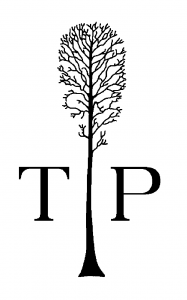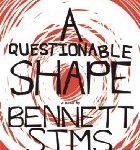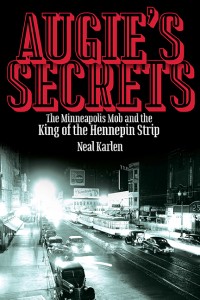The Writing Life: An Interview with Jeffrey Levine and Kirsten Miles of Tupelo Press
 Note: During the month of January, I, and eight other poets, are participating in Tupelo Press’ 30/30 Project. The object of the game is to write a poem every day for thirty days, and in so doing, raise funds from friends, teachers, and readers for Tupelo Press. The poems are posted daily here, and participating writers are responsible for fundraising in whatever way suits them. (If you’re interested, join me here!) Why Tupelo, you ask? Tupelo Press is a 501(c)(3) nonprofit company, so they depend on support to seek out and publish emerging and established poets, fiction, and non-fiction writers. I was able to gain more insight on this project and Tupelo Press itself through correspondence with Jeffrey Levine, Publisher and Editor-in-Chief of Tupelo Press, and Kirsten Miles, who is a Regional Director.
Note: During the month of January, I, and eight other poets, are participating in Tupelo Press’ 30/30 Project. The object of the game is to write a poem every day for thirty days, and in so doing, raise funds from friends, teachers, and readers for Tupelo Press. The poems are posted daily here, and participating writers are responsible for fundraising in whatever way suits them. (If you’re interested, join me here!) Why Tupelo, you ask? Tupelo Press is a 501(c)(3) nonprofit company, so they depend on support to seek out and publish emerging and established poets, fiction, and non-fiction writers. I was able to gain more insight on this project and Tupelo Press itself through correspondence with Jeffrey Levine, Publisher and Editor-in-Chief of Tupelo Press, and Kirsten Miles, who is a Regional Director.
 Hazel & Wren: How did Tupelo Press get its start? And what does non-profit status allow you to do?
Hazel & Wren: How did Tupelo Press get its start? And what does non-profit status allow you to do?
Jeffrey Levine: So, in 1999 I created this “job” out of, well, nothing. I knew what I wanted to do, but I didn’t really know very much about doing it. Strictly speaking, that’s not really true. It would be more true to say that I didn’t really know anything about it, except, I felt I had one important talent: I could spot great writing. (Every entrepreneur needs a healthy dollop of ego.) So, I rented a little office on the second floor of the US Post Office in Walpole, NH, and I found a desk and a chair, a telephone (remember those), a computer, and a printer and set about learning my craft.
Non-profit status gives us the ability to apply for grants and to reach out to the public at large for help with the funding required to operate any sort of press. Funding a literary press is like running any other arts organization. It’s hard. It’s costly. We’re all about finding and holding onto a base of supporters who believe in our mission, who love our books, our online journal, our various literary projects (like the 30/30), and who like the fact that, as a non-profit, gifts to us are tax deductible (to, as they say, the extent permitted by law). That said, almost every literary press in the land is a non-profit, even the university presses.
H&W: How is the base of Tupelo Press readers comprised? (i.e. online? subscriptions?)
JL: We sell thousands of books a year through bookstores, especially independent (non-chain) bookstores, through Amazon, to colleges and universities (on account of course adoptions), to libraries, through distribution houses (like Small Press Distribution out of California) and directly through our website. We offer subscriptions each year (9 books for $99), so subscribers form an important part of our sales base.
H&W: It looks like Tupelo Quarterly has just gone live! Is this Tupelo Press’s first online literary journal? What does this project represent for the company?
Kirsten Miles: Yes, this is Tupelo Press’s first online literary journal. We have always planned on a journal as part of our mission, and with the addition of Jessamyn Smyth we have found an editorial voice with a complementary passion for “holding the gate open” for new voices new tones and new dialogs in poetry.
JL: Now that we have an online literary journal (which is about to launch it’s second issue), we also can say that we have a significant online readership. The Tupelo Quarterly gives us, essentially, another media in which to offer literary prose, poetry, and art. It also gives us the ability to mix-media, and to give exposure to significantly more terrific poets, as we can only afford to publish about 15 books a year, but we can present and publish hundreds of writers each year “on the air.”
H&W: The Tupelo Press website states the following regarding submissions: “We’re drawn to technical virtuosity combined with abundant imagination; memorable, vivid imagery and strikingly musical approaches to language; willingness to take risks; and an ability to convey penetrating insights into human experience.” Can you speak to the development of this statement? What do you think the work published in Tupelo Press publications will represent in our current ‘artistic time’?
I hope that opening the gate for these emergent voices will lead to a greater recognition of, and more vehicles for published poets, that our legacy is the paths of these poets but also the expansion of the path of poetry, of writing as an honored art form and authors, especially poets, as valued artists. We seek this for our young writers in the Tupelo Press Writing Center, to give hope to future generations of authors, that writing is an art worthy of the deepest societal support.
Let me answer your question this way: My favorite moment from my job is really a recurring moment, when everybody has left the Tupelo Loft, called it a day, and I’m there alone with the books on the shelves (and so, in a way, with the 140 or so authors we’ve helped to send out into the world,) and there are the books in the boxes and the hundreds of manuscripts stacked up on the sorting table and the left-over coffee and the windows wide open on the Berkshire mountains, at least in that part of the year when you’d want to open them, and I have time to think with no small pleasure about the difference this Press has made in the world, or anyway, the difference I imagine it has made, and that has to do with playing an important part in shaping American letters, and also that it amounts to a kind of modest legacy, and if I’m wrong about that, still there are those mountains.


 A Questionable Shape by Bennett Sims (Two Dollar Radio, 2013)
A Questionable Shape by Bennett Sims (Two Dollar Radio, 2013)
I love a good zombie novel. The trick to making a good zombie novel is nuance. You don’t need moaning hordes constantly dismembering innocent bystanders. If innocent bystanders are too busy fearing for their lives, they’ll never have time to ruminate on, in philosophical terms, the zombie-ness of the zombies. If the zombies aren’t quarantined for public safety, citizens won’t be able to move on and try to navigate the post-epidemic world. A nuanced, philosophical look at life with the undead is exactly what Bennett Sims gives us in A Questionable Shape.
Three months after the epidemic began and a week before hurricane season officially starts in Baton Rouge, government officials are trying to round up the straggling undead for quarantine and best friends Vermaelen and Mazoch are desperately searching for Mazoch’s missing father. They have a week left to search. Officials have determined that the undead somehow navigate toward the places that were important to them while they were alive, so Mazoch has created a list of possible search areas for his father.
On the one hand, they are creatures of pure memory: they return only to sites from their past, and can find their way back to neighborhoods buried far into their childhoods. But on yet another hand (and this is turning out to be a real Shiva of dialectical reasoning), they are creatures of pure forgetfulness: the sites they return to, so potent with mortal nostalgia, mean nothing to them, and they navigate them unconsciously, are as sleepwalkers there.
Vermaelen, serving as narrator, is not an easy person to sit and ruminate with. Between his ten-dollar words, his indecisiveness, and his penchant for footnotes, he’s quite maddening. He even relates the footnote to the undead.
Since the outbreak, I have often reflected that the footnote is the typographic mark most emblematic of undeath. By opening up a subjacent space on the page, the footnote digs a grave in the text, an underworld in the text. The words that are banished there are like thoughts that the text has repressed, pushed down into its unconscious. But they go on disturbing it from beneath, such that if the text were ever infected, they are the words that would guide it. Footnotes are a text’s phantom feet.
But maddening as he may be, Vermaelen’s analysis of the undead epidemic is fascinating. His girlfriend, Rachel, and Mazoch debate how to categorize the undead. Rachel volunteers in a quarantine facility with the undead and feels they are just “people with a disease.” Mazoch believes they are “contagious cannibals.” Although he’s only seen one undead (in the middle of night, two blocks away), Vermaelen eschews categorizing the undead and instead obsesses over what being undead might actually feel like. He’s spent most of his post-epidemic time reading every available article on the undead and their behavior. He pores over FIGHT THE BITE, a government-issued guide to surviving and thriving around the undead. What, if anything, do those milky white eyes see? What do those ever-rotting hands feel as they tear apart another human being? Vermaelen considers the philosophical ramifications of undead hands through a Heidegger lens.
If an infected breaks into its old bedroom, and its hand roots under the bed for the hammer that it ‘knows’ is there, then doesn’t the infected also ‘know’ the equipmental totality of the mattress, bed, room, and house, that is, the entire Being-in-the-World of its quondam Dasein, which is to say, couldn’t the infected be, in some qualified way, precisely the same Dasein? And in the case of Frankenstein’s monster, these ontological ramifications multiply mind-bogglingly across all of his limbs. Because each hand wants to root for a different tool from a different life, and because each foot wants to walk toward a different home—because the monster has to coordinate all of his limbs independently, just to stumble forward and turn a doorknob—it’s as if his entire body were a gangline of Daseins, pulling the musher of his madman’s brain.
But his pondering doesn’t stop at the philosophical. Vermaelen also imagines how his own hands may act if he were to be infected.
They would be before-hands. And so they would never adopt new habits, in undeath. They would not try to play the piano, for instance, or to casually vandalize my apartment. Even if they did things that I never did with them (like tear into another person’s flesh), they would do them somewhat in my manner: ripping to the meat in the same way that, at barbeques, they used to rip into ribs.
A Questionable Shape is not a quick and easy read, but it is a satisfying one. It’s not often you get an intellectually stimulating zombie novel that includes references to just about everything—video games, famous philosophers, paintings, and movies. To fully appreciate A Questionable Shape, you have to spend time with it, digesting and savoring the myriad musings of Vermaelen. To rip into it like an undead would its latest victim is to miss out on a great addition to the literary zombie genre.
What kind of zombie novels do you enjoy? Do you prefer to be kept up at night by terror and suspense or philosophical meditations?
What We’re Reading: Augie’s Secrets

 Augie’s Secrets: The Minneapolis Mob and the King of the Hennepin Strip, by Neal Karlen (Minnesota Historical Society Press, 2013)
Augie’s Secrets: The Minneapolis Mob and the King of the Hennepin Strip, by Neal Karlen (Minnesota Historical Society Press, 2013)
St. Paul’s Police Chief John O’Connor protected gangsters during Prohibition. For a small fee, O’Connor looked the other way as long as they left the city before abducting political candidates and burying the evidence. I know this because Neal Karlen knows this. Karlen knows this because his father knows, and his father knows because his uncle, Augie Ratner, was the unofficial mayor of downtown Minneapolis. Through the 1950s, the Jewish mafia ran rackets across the Twin Cities, and Augie was their best friend and confidant. In the loving biography of his faith and family, Augie’s Secrets: The Minneapolis Mob and the King of the Hennepin Strip, Karlen upholds his great uncle’s crown as the King of Hennepin Avenue.
As an adjunct professor with the University of Minnesota, Karlen has written for The New Yorker, GQ and Rolling Stone. Along with writing eight books, Karlen’s also a regular contributor to The New York Times. In 2008, William Morrow published Karlen’s study of the Yiddish language, and this passion for his heritage rings through Augie’s Secrets. Using slang like he’s back at the club, Karlen sometimes can’t slow down to explain what farbisseneh means because he’s telling you about the time boss Davie Berman broke up a pro-Nazi rally at the Minneapolis Elks Lodge.
Augie wasn’t a gangster, but they all came to his club. In the ’30s he opened Augie’s Theatre Lounge on Hennepin, featuring live music and burlesque entertainment. He checked guns at the door, and kept a space in the back lot with a bright light for fighting. Augie knew John Dillinger; they even liked each other. He knew Jimmy Hoffa, Bugsy Segal, and the local boys Isadore “Kid Cann” Blumenfeld, and Davie Berman, who eventually helped Las Vegas become Sin City. Augie gave people a place to hide away from cops, lovers, and debt collectors. Today we know Augie’s as that strip club over on Hennepin, but during the years around Prohibition, with corruption on the streets and in the capital, Augie’s was a haven for people to shed their lies.
As Karlen tells it, Augie knew where the bodies were buried. He knew whose blood stained the money, he knew what the Mayors couldn’t tell the press, and he knew all his neighbors. Every day Augie rode his bicycle around Lake of the Isles while smoking a cigar and waving to families on his way to hear another confession.
Augie played no other angle except that of friendship. He asked only that he be allowed to play the good, always friendly, sometimes buffoonish character he was —but he was aware of everything.
And now we are aware of everything. But when our friend Augie welcomed strangers with a drink and a smile, no one could see his mask. As loyal friend and studious businessman, Augie lived along the line between outlaw and lawman. Hardened by the popular bigotry of Minneapolitans, some of the most powerful Jewish gangsters fought to kill. When the publisher and anti-semite Walter Ligger tried to extort Kid Cann, the Kid gunned him down while unloading the groceries with his family. Karlen found the Kid’s alibi.
Kid Cann said he was “getting a shave and a manicure, just like he did every day, from Dave Garfinkle at Garfinkel’s Artistic Barber Shop, just a few feet away from Augie’s joint. Garfinkle swore it was true. But it wasn’t. At the time of the murder, Dave Garfinkle was cutting Augie’s hair.”
Augie’s Secrets reads like a transcribed monologue, with Karlen acting out all the parts. You open the book and he’s invited you over for drinks to tell you the secrets of his family. In 1943, Augie sat in his club with John Roberts, an FBI special agent, and Bill Stern, the owner of the Dakota National Bank in Fargo and a leader of the Republican National Committee. Also seated was James Francis Keating, one of the most notorious bank robbers of the 1920s. Only Augie knew Keating as Jimmy, the reformed Minnesota man just released from Alcatraz. Karlen recalls his family history with impressive detail:
Augie: Bill, I don’t think you’ve met our friend Jimmy Keating. Jimmy, Billy is a banker in Fargo.
Jimmy: What bank, Bill?
Bill: I’ve owned the Dakota National Bank for many years.
Augie: Jimmy, have you ever done business up there?
Jimmy (pausing): The Dakota National? Oh yes, I know it well.
Jimmy had, in fact, knocked off Bill’s bank a generation before —and gotten away with it. Augie grinned and relit his cigar.
Though his writing captures the danger and excitement of a lawless America, Karlen disturbs the pacified notion of Minnesota’s Nice Culture. Our Twin Cities developed through the post-war boom with pervasive corruption and anti-semitic rage. To read this book is to bear the weight of our shared history. With the rigor of a scholar and the honesty of your closest friend, Karlen challenges us to consider the lives we all carry quietly behind our eyes.
Sometimes you find words that hit you in the gut and fit you like a new pair of glasses. What the last book you read that changed the way you see your city?
What We’re Reading: The Helpful Writer’s Bookshelf
 Every writer’s shelf should include a handful of literary “self-help” books, guide books for the field of writing and editing. These books are the books we turn to when editing a draft, identifying a specific form or term, or for general curiosity. What are your go-to writing guides? Here are a few of mine that I have found helpful.
Every writer’s shelf should include a handful of literary “self-help” books, guide books for the field of writing and editing. These books are the books we turn to when editing a draft, identifying a specific form or term, or for general curiosity. What are your go-to writing guides? Here are a few of mine that I have found helpful.
 The essential grammatical bible: The Elements of Style by William Strunk Jr. and E.B. White. This classic slender volume is a one-stop shop that contains timeless, necessary rules and principals of style, form, and word usage. I don’t think I need to go into much more detail, as I’m sure many of you already own, or at least have encountered this book.
The essential grammatical bible: The Elements of Style by William Strunk Jr. and E.B. White. This classic slender volume is a one-stop shop that contains timeless, necessary rules and principals of style, form, and word usage. I don’t think I need to go into much more detail, as I’m sure many of you already own, or at least have encountered this book.
 For some educational yet sassy grammatical humor (or should I say humour?): Eats, Shoots and Leaves by Lynne Truss. All the rave when it was published in 2003, I still find this book hilarious in its high-strung, nerdy, bookish way. Basically, the book is a collection of rants derived from Truss’ pet peeves and intense frustration with widespread grammatical misuse and error in today’s internet culture. While reading, use the opportunity to brush up on your grammar etiquette through Truss’ quirky, but informational narrative.
For some educational yet sassy grammatical humor (or should I say humour?): Eats, Shoots and Leaves by Lynne Truss. All the rave when it was published in 2003, I still find this book hilarious in its high-strung, nerdy, bookish way. Basically, the book is a collection of rants derived from Truss’ pet peeves and intense frustration with widespread grammatical misuse and error in today’s internet culture. While reading, use the opportunity to brush up on your grammar etiquette through Truss’ quirky, but informational narrative.
 Genre-specific guide (in this case, poetry): A Poetry Handbook by Mary Oliver. For any poets out there, Oliver’s guide is delightful, including advice, well-chosen excerpts and examples to provide context, and a natural breakdown of the different forms and uses of poetry. Not only does Oliver write in a compelling manner, she teaches the reader effortlessly, guiding them with an expert hand. Fiction and nonfiction writers: what genre-specific guides to you fall back on?
Genre-specific guide (in this case, poetry): A Poetry Handbook by Mary Oliver. For any poets out there, Oliver’s guide is delightful, including advice, well-chosen excerpts and examples to provide context, and a natural breakdown of the different forms and uses of poetry. Not only does Oliver write in a compelling manner, she teaches the reader effortlessly, guiding them with an expert hand. Fiction and nonfiction writers: what genre-specific guides to you fall back on?





